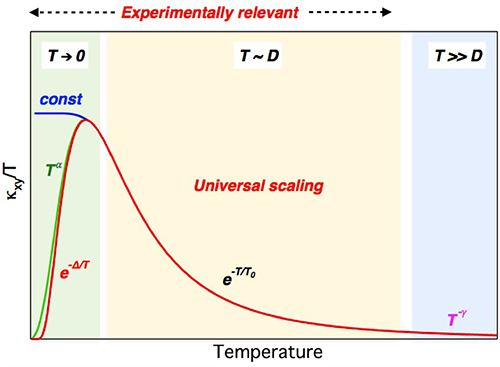[ Instrument R & D of Instrument Network ] In 2019, "Nature" magazine reported that a huge thermal Hall effect was also found in the copper oxide high temperature superconducting matrix, which caused a lot of discussion. Unlike the general Hall effect, the thermal Hall effect measures the lateral temperature gradient caused by longitudinal heat flow under a vertical magnetic field. In an associated insulator, the thermal Hall effect comes from the intrinsic or induced non-trivial topological properties of electrically neutral carriers such as phonons, magnetic excitons, spinons, etc. In spin liquid materials, thermal Hall effect has been studied in both experimental and theoretical aspects. However, the existing microscopic theoretical models are very complex, and it is difficult to establish a direct connection with the experiment.

The Hall effect is a kind of electromagnetic effect. This phenomenon was discovered by the American physicist Hall (EH Hall, 1855-1938) in 1879 when studying the conduction mechanism of metals. When the current passes through the semiconductor perpendicular to the external magnetic field, the carriers deflect, and an additional electric field is generated perpendicular to the direction of the current and magnetic field, thereby generating a potential difference between the two ends of the semiconductor. This phenomenon is the Hall effect, and this potential difference is also This is called the Hall potential difference. The Hall effect is determined using the left-hand rule.
In order to fill the gap between the microscopic theoretical models and experiments, Yang Yifeng, a researcher at the Institute of Physics of the Chinese Academy of Sciences / Beijing National Research Center for Condensed Matter Physics, collaborated with Zhang Guangming, a professor at Tsinghua University, and Zhang Fuchun, a professor at the Institute of Theoretical Sciences at the University of Chinese Academy of Sciences, using Fermi Liquid The phenomenological idea of ​​theory proposes a minimum model for analyzing the thermal conductivity of Hall in the associated insulator, and then predicts the energy distribution that depends on the Bailey curvature of electrically neutral Fermi or Bose carriers. At low temperatures, it will show different behaviors such as saturation, power, and thermal excitation, but it will show a universal exponential dependence on temperature in the intermediate temperature region of the carrier bandwidth half-band magnitude, which does not depend on the specific material. detail. This universal scaling law is supported by experimental data in spin liquid material RuCl3, quantum paraelectric material SrTiO3 and copper oxide.
Fermi liquid theory is a theoretical model of interacting Fermi particles, describing the normal state of many metals at sufficiently low temperatures. Here, the interaction between multibody particles need not be too small. The Fermi liquid phenomenon was introduced in 1956 by the Soviet physicist Landau, after Alexei Abrikosov and Isaac Karatonikofu were developed by Feynman diagrams using perturbation theory. Fermi liquid theory explains why some properties of interacting Fermi particle systems are very similar to Fermi gas (non-interacting Fermi particles), and why other properties are different.
Source: Encyclopedia, Institute of Physics
LADIES TROUSERS
Trouser Pants For Ladies,Palazzo Pants For Women,White Trousers Women,Wide Leg Trousers Women
SHAOXING NEWIDEA GARMENT CO.,LTD , https://www.shouyaoapparel.com

